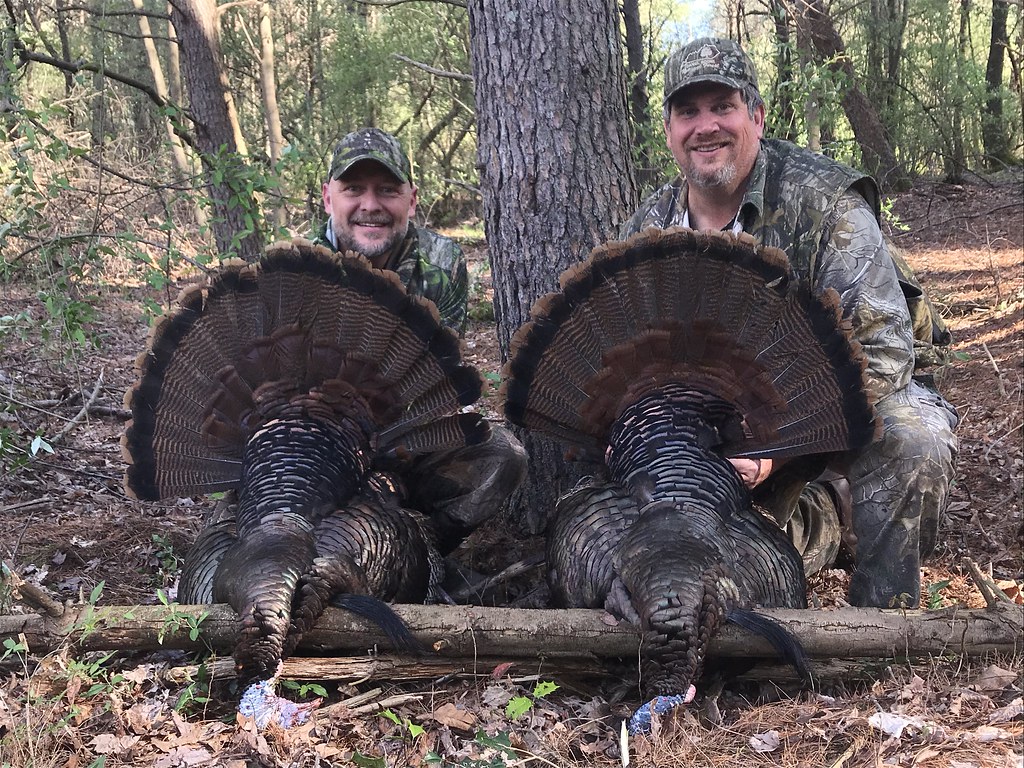
The wild turkey is an American icon. It is so iconic that, had Benjamin Franklin had his way, it could have become the national bird. Alas, it is the bald eagle that adorns the Great Seal of the United States, and the noble turkey is relegated to the dinner table in most homes.
Still, the turkey’s place on the dinner table is special, in its own way. The image of loved ones gathered around a turkey on Thanksgiving is so traditionally American, that Norman Rockwell enshrined it in his 1943 painting Freedom from Want. No one is completely sure how the tradition began. There are many theories. Suffice it to say, it’s a big bird, native to North America, and delicious to boot. It makes sense that it would be at the forefront of this American holiday.
As for how you get the bird, well that’s another tradition the National Wild Turkey Federation would like to see continue.

There was a time when the wild turkey’s future was uncertain. Before Europeans began settling in North America, more than 10 million wild turkeys roamed the land — and that’s a conservative estimate. By the 1930s, unregulated hunting and habitat loss reduced wild turkey populations to around 200,000 birds.
Luckily, hunters, working together with other advocates and elected officials, were able to get laws passed that protected the birds, other game species and their habitat. These efforts were funded mainly through excise taxes on hunting equipment and ammunition, proposed by hunting groups themselves, which were allocated to state fish and wildlife agencies to invest in conservation efforts.
Today, the Forest Service and other federal land management agencies work alongside state agencies and non-profits like the National Wild Turkey Federation to work on conservation projects.
The wild turkey made an incredible comeback from its historic lows in the early 20th century, but recent declines in populations have created new challenges.
“The biggest issue is that wild turkeys need this mosaic of habitat throughout their life,” said Matt Lindler, director of conservation communication at the National Wild Turkey Federation.
“Hens need young forests for nesting, open spaces that hold protein-rich bugs. Young turkeys need to grow quickly and prepare for winter and a place to quickly escape from predators,” Linder said.
No one landscape is ideal for wild turkeys. Their needs vary throughout the year and stages of their life. If one factor is off-kilter, it creates situations where it is difficult to mate, nest and raise young.
“This is where the concept of shared stewardship is critical,” said Jason Lupardus, midwest director of conservation operations and wildlife biologist at the National Wild Turkey Federation.
“Where I am in Kentucky, without the Forest Service, we wouldn’t have public lands, period.” Lupardus added that in just over 10 years, the National Wild Turkey Federation has implemented nearly 120 stewardship agreements across the country to improve forest conditions and create the conditions turkeys need to thrive.
Work between the Forest Service and the National Wild Turkey Federation is extensive. In 2013, the National Wild Turkey Federation took a strategic approach to address conservation issues by breaking the country into six regions. They call it “America’s Big Six,” an approach that aims to address unique conservation issues at a more local level.
“The Forest Service is very engaged with that program,” said Lindler, “through stewardship contracts, they are able to make a big difference in those regions.”
Stewardship agreements allow land management agencies like the Forest Service to enter into agreements for up to 10 years to improve forest conditions, wildlife habitat and reduce wildfire risk. Many of these agreements involve timber purchases.
Lupardus says it is for that reason that the National Wild Turkey Federation was the fourth largest purchaser of Forest Service timber in the country last year.
Forest management is key in giving turkeys the habitat they need. Thinning out stands, doing small, patchwork cuts, and removing invasive species ensures great nesting and brood range. Other projects include using prescribed fires to carefully reduce fuels and thatch that can make it hard for young turkeys to move, evade predators and find the protein-rich insects they need to ready themselves for colder weather.
The data from Lupardus’s team shows areas where they’ve conducted prescribed fires have two to three times the number of insects—or “protein pills,” as he calls them.
Another large effort that’s been underway for more than seven years is the National Wild Turkey Federation’s “Save the Habitat. Save the Hunt.” initiative. This initiative aims to conserve or enhance four million acres of critical habitat, recruit 1.5 million hunters and open an additional 500,000 acres for hunting.

“We surpassed the access goals last year, we surpassed the new hunter recruitment goal this year, and we’re well on our way to surpassing our goal for enhanced habitat,” Lupardus said. “And we’ve got another three years to do even better.”
Kelle Reynolds is the coordinator for the Forest Service’s Making Tracks program, which is focused on the 34-year-long partnership with the National Wild Turkey Federation, as well as state wildlife agencies, conservation groups and others. She knows the importance of this work well.
“When we work together, we can do amazing things—things none of us could do alone” Reynolds said.
At this time of year, we’re reminded to be grateful. Reynolds says she is grateful for the abundance the landscape provides and for the many partners like the National Wild Turkey Federation that make it possible.



